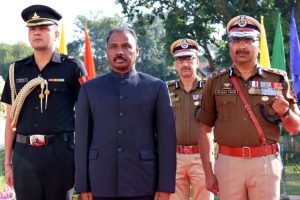
The current J&K administration’s rule is not subject to any temporal restrictions
Sikandar Hayat Khan
THE one-year anniversary of the Central Government’s move to ‘integrate’ the state of Jammu & Kashmir with the Indian mainland is just around the corner. Some Constitutional Amendments, legislations and other orders later, a question that takes the centerstage, is, when will the Union Territory of J&K see the light of the election day? The answer to this question takes one down a rather complicated road, which I seek to simplify through this article.
Beyond the magnum opus of August 5 i.e. Constitution Order 272, which effectively put an end to Article 370, the Centre also introduced, what is now the Reorganization Act, 2019. While the former put an end to the state’s special status, the latter divided the state into two Union Territories of J&K and Ladakh respectively. Article 239A of the Indian Constitution (which provides for a legislature in a UT) has been extended only to the UT of J&K through section 13 of the Reorganization Act. This means, that J&K will welcome the electoral process after a two-year hiatus. The focal aspect is, when?
As of today, J&K is under the Lieutenant Governor’s rule. It is pertinent to highlight that LG’s rule is distinct from both President’s rule as well as Governor’s rule. In 2018, when the PDP-BJP coalition dismantled, what was imposed is known as the Governor’s rule. Since Kashmir had its special status then, section 92 of the now dysfunctional Constitution of J&K provided that for a period of six months after the failure of the governmental machinery, the Governor rules the state. It is only on lapse of six months that the President’s rule is imposed. On reorganization, J&K was made a UT and a new designation of a Lieutenant Governor was created. In October 2019, the President vide a notification, formally revoked his rule over the UT but the Central rule has since continued in the form of LG’s rule. This is the difference in the three terminologies.
Had the state not been turned into a UT, in line with Article 356 of the Constitution of India, President’s rule would have to make way for compulsory elections after 3 years of imposition. However, currently, the position is governed by section 73 of the aforementioned Reorganization Act. The section states that “if the President, on receipt of a report from the Lieutenant Governor of Union territory of Jammu and Kashmir, or otherwise, is satisfied,— (a) that a situation has arisen in which the administration of the Union territory of Jammu and Kashmir cannot be carried on in accordance with the provisions of this Act, or (b) that for the proper administration of Union territory of Jammu and Kashmir it is necessary or expedient to do so, the President may, by order, suspend the operation of all or any of the provisions of this Act for such period as he thinks fit and make such incidental and consequential provisions as may appear to him to be necessary or expedient for administering the Union territory of Jammu and Kashmir in accordance with the provisions of this Act.”
On a simple reading of this provision, it can be ascertained that the power of the LG to impose his/her rule over the UT of J&K is not subject to any temporal (time-based) restrictions as the case would have been if the J&K had been left a state without special status. Therefore, on receipt of a report of LG or even otherwise, Central rule through LG may continue as per the discretion of the President. Notwithstanding the legality of these laws, the current position is amply clear. There is no constitutional or statutory mechanism that necessitates the holding of an election in a time bound manner in J&K. As things stand, it is the sole discretion of the Centre. Furthermore, even upon the installation of a democratically elected government, the Centre through LG retains the power to topple the government, if ‘situations’ warranting such toppling arise.
Follow this link to join our WhatsApp group: Join Now
Be Part of Quality Journalism |
Quality journalism takes a lot of time, money and hard work to produce and despite all the hardships we still do it. Our reporters and editors are working overtime in Kashmir and beyond to cover what you care about, break big stories, and expose injustices that can change lives. Today more people are reading Kashmir Observer than ever, but only a handful are paying while advertising revenues are falling fast. |
| ACT NOW |
| MONTHLY | Rs 100 | |
| YEARLY | Rs 1000 | |
| LIFETIME | Rs 10000 | |













